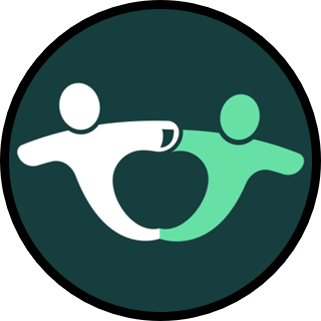
Have you been asked to teach French as a Second Language (FSL) or Core French but have absolutely no experience? Maybe you don’t even speak French fluently? Maybe you took French in High School (15 years ago) and you are considered the most qualified in your school. As crazy as that may sound to some…it happens…all the time!
Whether you’ve been asked to teach FSL for the first time or you’re a seasoned teacher who is looking for new ideas, this post is meant for you. These reading, writing, speaking and listening ideas could apply to the teaching of any second language.
Where Do I Begin With French as a Second Language?
One of the easiest places to begin is to connect your French lesson to your everyday routines. Think of all the routines you do every week. Can any of them be done in French?
Although we don’t typically do calendar activities in grades four through six, this would be a good way to introduce the calendar language in French.
The alphabet is another good place to start. English speakers should notice that the alphabet is the same in both languages…some letters are almost said the same way.
What Materials Can I Use to Teach French as a Second Language?

Worksheets
Sometimes, a quick worksheet is what you need. Word searches, matching activities and fill in the blank have their place, too, but can become tired when used all the time. There is so much more that can be done to get your students excited about learning French or any other second language. But worksheets can be a quick fix to get you started.
Playing Games
Who doesn’t love a good game? Students buy-in when they can play a game. Use games to develop and practice vocabulary, basic sentences, and concepts. All our products in the FSL Bundle include games. After all, most students still love to win a bingo game!
Play games that use materials you already have in your classroom. This cuts down on your preparation. Repurpose a deck of cards, dice, tokens, math blocks or anything else you have on hand for your second language class. Learning numbers is the most obvious way to use these materials.
Simple games like “I have…who has”, guessing games, Scoot games and Bump games like the ones included in our Pronoms Personnels – Sujets are a good start to get kids up and moving.
Here is a little feedback we’ve received from teachers who’ve played the games with their students.
Super easy to use and understand. Students were engaged and set up for success. Loved the games included to reinforce what they had been practicing.
– Teacher
Inventing Games

Get students to invent their own games to use creativity while practicing the target vocabulary. Students LOVE to share the games they create with their classmates. And who knows…you may end up with some good games you can use year after year! So many great games have been created by students to practice giving instructions or commands in our Impératif: Les orders en classe.
We have an Indigenous counting game called the Bone Game in our Resource Library. The game was used by Blackfoot children to learn their numbers in their native languages. It can easily be used for learning French numbers. Grab the game in our Resource Library or we can send a copy to your inbox when you sign up for our email list.
Movement
Physically moving helps students make connections and strengthen their understanding. Moving around the classroom, putting words in order, or walking while talking are great ways to get students moving. Physical games will step up your ‘game.’ Get them moving! Simple preschool games can easily be adapted with French words.
Interactive Notebooks
Interactive notebook templates add interest to jotting down basic vocabulary. These make great reference pages for things like greetings and praise words. When students are involved in creating reference pages, they are more likely to return to use them when practicing.
Use a file folder for students to create a deep and enriched understanding of a language topic. How to ask and answer questions in French is complex work. Our lessons use guided templates to teach students the topic while creating a reference tool for use all year and beyond!
Word Work
Extend student understanding of key vocabulary by having students do word work. Activities that include synonyms and antonyms or having students practice different ways of saying greetings and leave-takings (goodbyes) are good examples of practicing and working with specific French words.
As you develop vocabulary with your students, have students track their new words. A personal dictionary or word wall book is an easy way to do this. Each letter has a page where students can write the English and French words. Extra pages include common verbs, French words, phrases, and terms.
The best personal French/English dictionary I’ve found. Love the verb conjugations and all the additional information at the end.
– Teacher
Drama
We love drama! We mean drama activities of course, because who really needs ‘drama’ between students, right!? Students practice their oral skills in the target language while doing a fun drama activity such as in the Introductory Vocabulary Unit to practice politeness words. You might be interested in more ways to bring drama into your classroom. The post is in English, but many of the games can be done in French.
Translation
Don’t be tempted by Google Translate! Have students complete simple structured translations old school. Writing a translation on paper helps students make connections between the two languages. Do it within a certain context like in simple dialogues to practice politeness words. It forces students to really think about the words and sentences in both languages.
Materials Found Online
The Internet has a vast number of resources available, but it can be a bit of a rabbit hole. Videos, songs, and online games are all great ways to enhance your classroom instruction.

Videos
Using videos is invaluable. Use short videos from reputable sites. Use videos that are:
- completely in French
- in French with English subtitles
- dubbed from English into French (this is especially great for videos students are already familiar with)
- have no dialogue
Videos versions of songs are great, too. Versions with the karaoke words are best. Songs (especially catchy ones) are a great way to learn a second language.
Don’t keep repeating the work. Create a Youtube list for videos and songs so that you can reuse them year after year. Remember to preview the videos first!
Want a distraction free YouTube experience? Make sure to try quietube. This will remove the recommendations and give you a clean viewing experience. There is also a Chrome Extension called AdBlock that works well on Chrome devices.
Websites
There are SO many websites but focus on a handful of sites that are professional and have rich youth sections. These are some of our favourites.
How to Boost Student Connections for French as a Second Language Class
Culture
Teach vocabulary to expand student exposure to cultural aspects, hitting two birds with one stone. Learn vocabulary through the cultural lens of the Francophone community such as flags of countries in the Francophonie. This lesson is included in our colour vocabulary set.
History
Connect the learning of a language to facts or the history of words. This adds a splash of interest to the learning. For example, the words for days of the week are mostly based on astronomy.
Stories, stories, stories!
Reading stories, listening to stories, speaking stories, and writing stories develop language. Using the calendar words, students can also practice using words such as today, tomorrow, and yesterday. This sets students up for simple storylines for reading, writing, listening and speaking.
Real-world Connections
Making the learning connect to real-world situations increases engagement. If students see the point of what they are learning and how they can use the language they will buy-in more. For example, learning numbers to use for travel gives students a real-world use for learning. Or having students understand the usage of the 24hour clock in French and how to tell time.
How to Handle Regional Spelling and Vocabulary When You Teach French as a Second Language

The French texts in our store are written using the new French spelling recommended by the Conseil supérieur de la langue française (Paris, 1990). What does this mean? As you may know, languages are living things. They change over time. French is no different. The Académie Française is an organization that has a group of people who are France’s official authority on the use, vocabulary and grammar of the French language.
In Canada, the Conseil supérieur de la langue française informs people about the French language in Québec (Canada). It recommends changes to French. Some of the changes include all number words using a hyphen between each word and the accent circonflexe (^) is no longer used on the i and the u such as in the month of aout.
For more information, please consult the following website: www.orthographe-recommandee.info
There are also many regional differences in the language regarding vocabulary. For example, the word classeur means binder in some places but filing cabinet in others. Neither is right or wrong, they are just different. There are two ways to tackle this. The first way is to choose the vocabulary that is commonly used in your region. The other is to introduce the differences. This is especially important when the resource you’re using has the vocabulary of another region (this happens all the time). Choose one regional set of words and stick to it!
Ready, Set, Go
We want this to be as helpful as possible for you. In the meantime, find out about the materials available in your school and check out the FSL resources in our store. Here’s what one teacher had to say about our French as a Second Language bundle:
This is a fabulous set of resources that allow me to plan classes around the same topic, but adjust for age/development and level. The visuals are beautiful, my students love the activities, and I appreciate the organized plans. I highly recommend this bundle for any teacher who is building a library of resources that is flexible and truly helps students build a strong vocabulary and grammar skills.
– Teacher
Don’t Forget About Assessment
How to Assess French as a Second Language
How to Learn French With French Canadian Celebrations
Saved by the Bell Ringers in Upper Elementary
Is there anything else that you do to be prepared to teach a second language? If we missed something, please comment below and we’ll add it to our list. If you still have questions, ask us those too.







